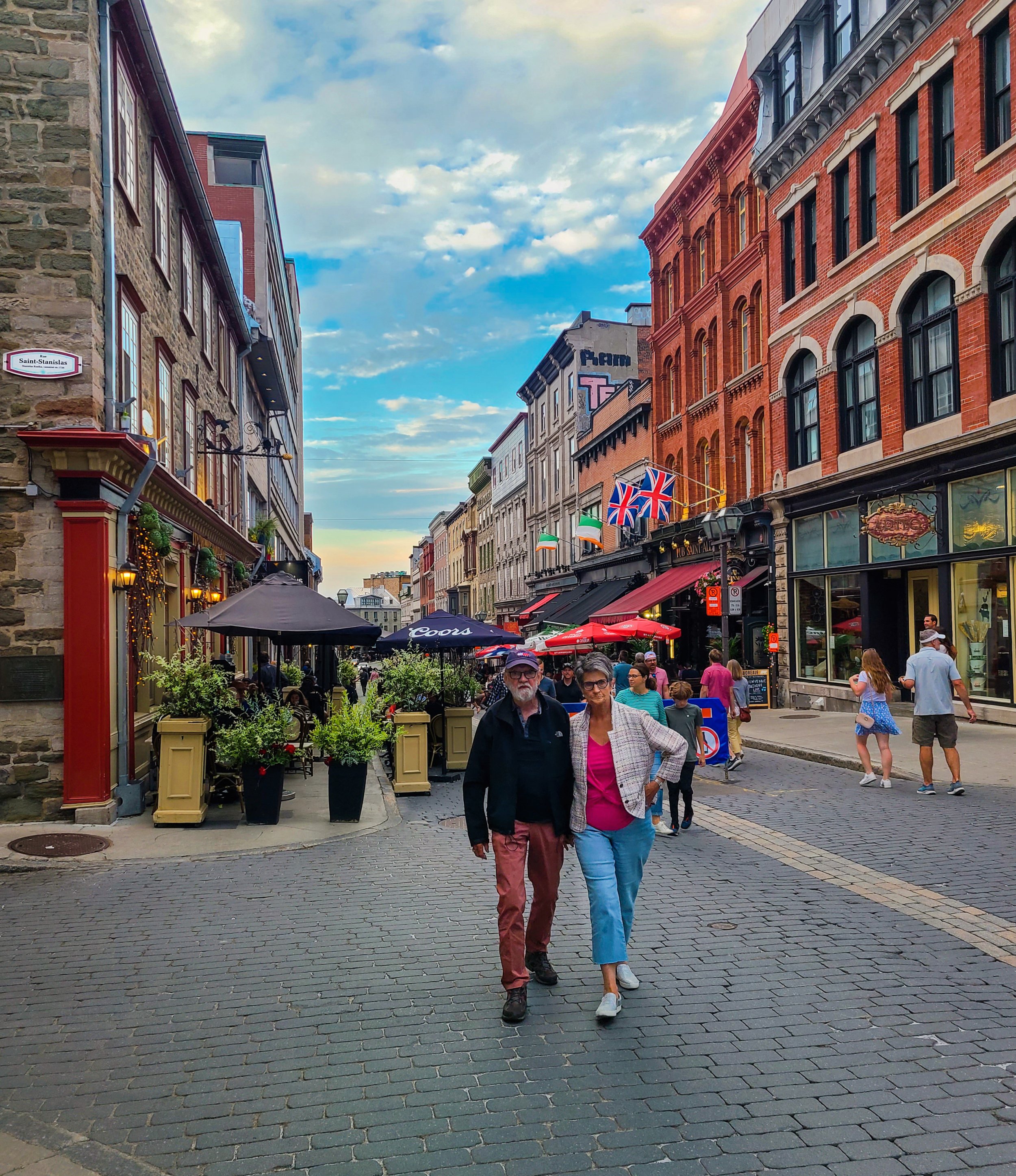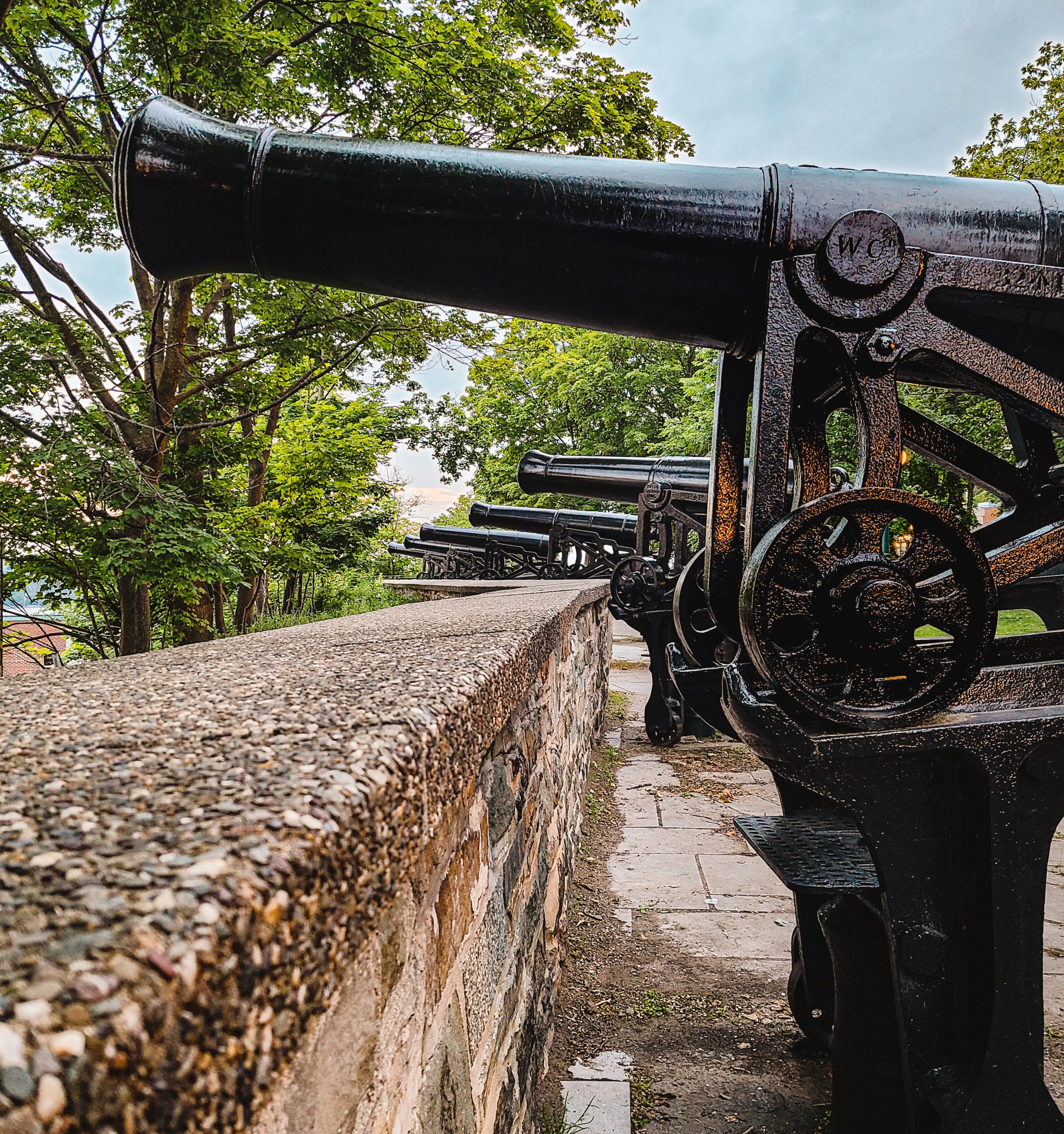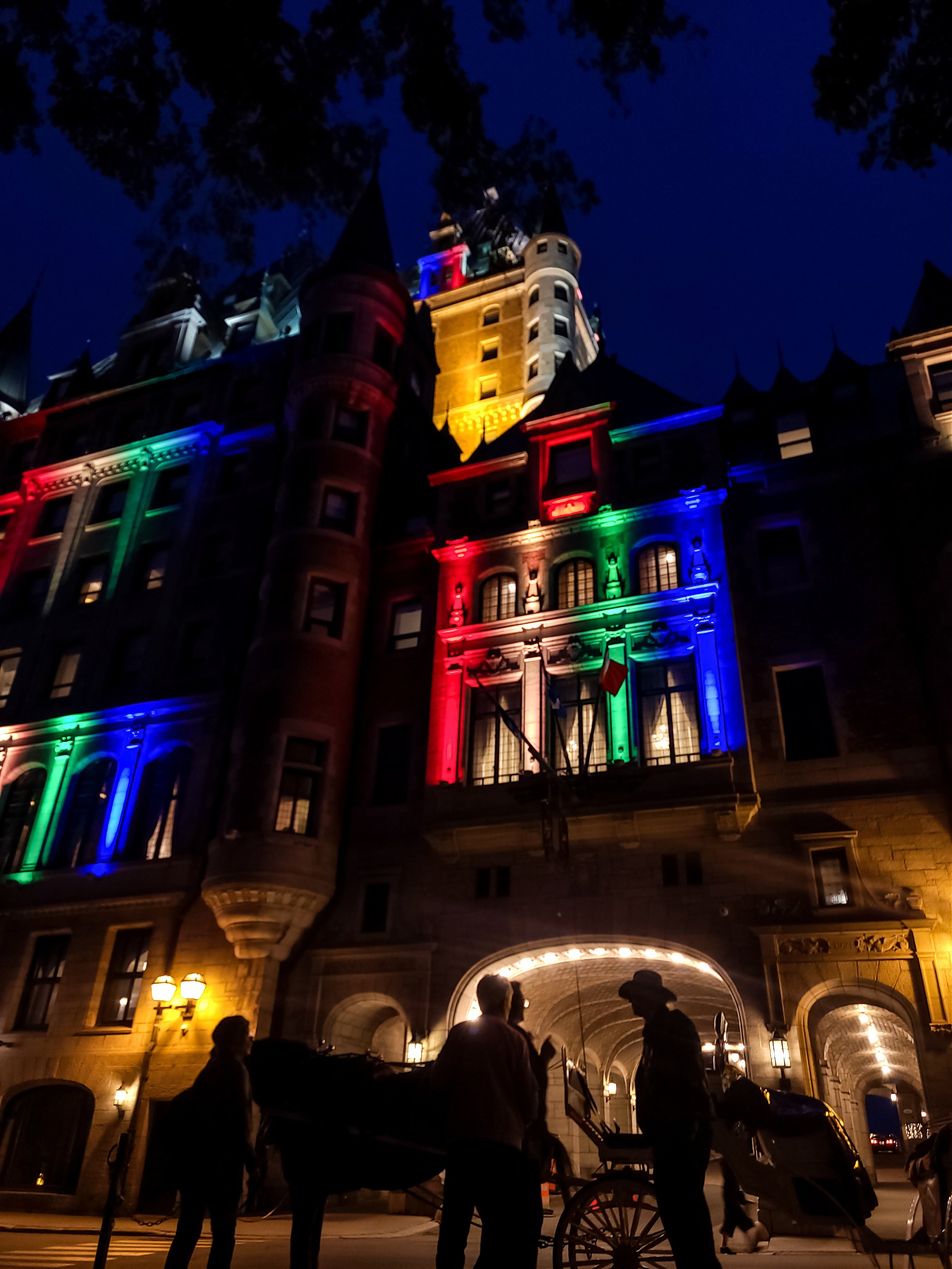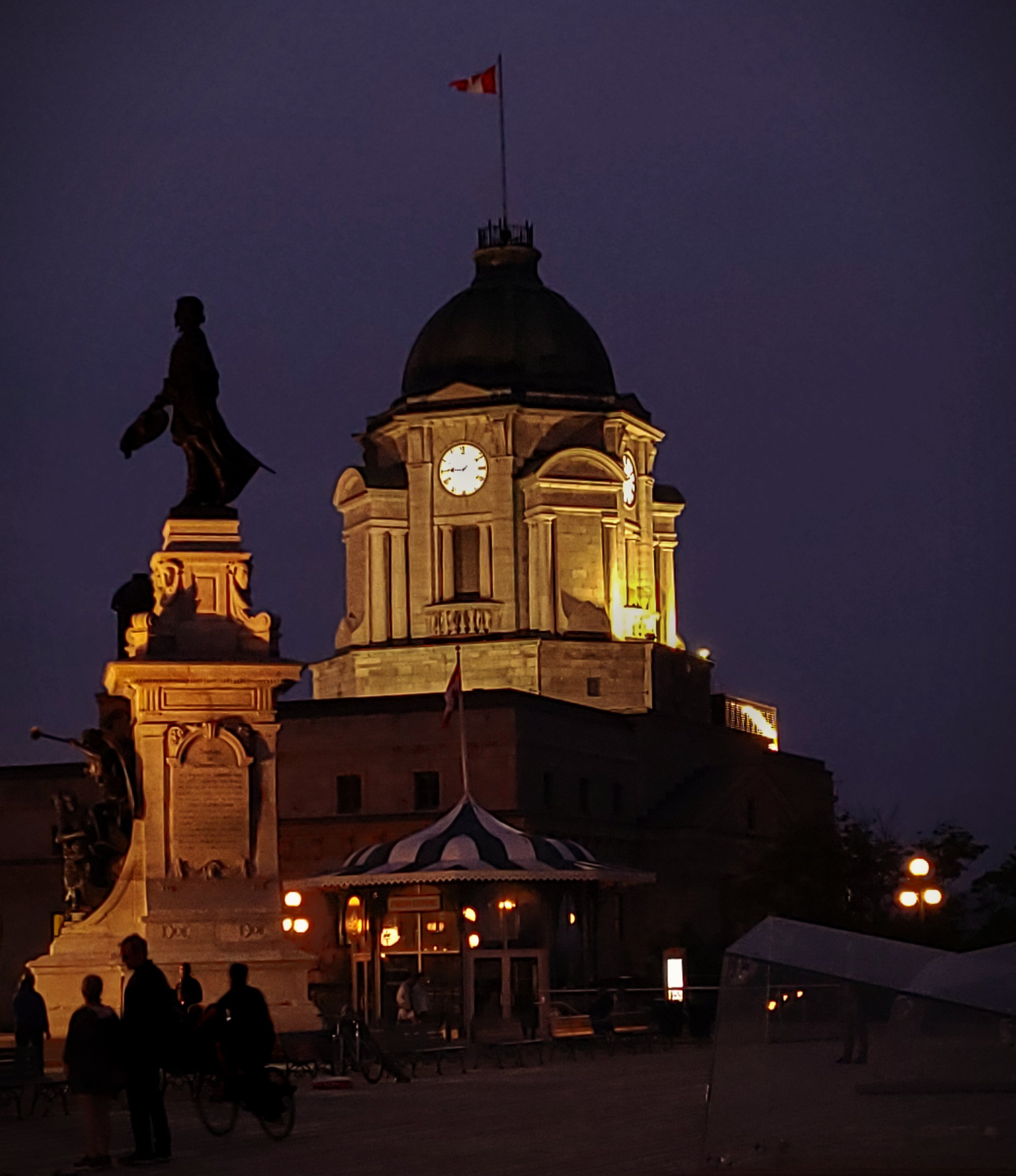Cross-Canada Road Trip: Weeks 4 and 5
Québec
How many days would go by before someone happened upon my rotting corpse? I thought about my cat. Would Samus be dead, too? Or on the very edge of her demise when some unsuspecting slob stumbled upon us, retching in horrified disgust over their discovery?
This is precisely what made it my all-time favorite truck stop. I was camped out there for two days and three nights and nobody seemed to notice or care. That, and the free WiFi that never quit. Bonus points for the rolling hills blanketed with the patchwork of farms surrounding it. And the big sky with its color show twice a day. It was prettier and quieter than some for-fee campsites. I could have remained another three nights, but the pull of the road wins every time. I wanted to visit Old Québec.
Nearly every byway I’ve traveled in Canada has been scenic. I believe it may be because, while the land masses of the USA and Canada are comparable, the population of the US is nearly ten times that of Canada. So, a great deal of my driving took me through forested land, farms, and coastlines unmarred by urban sprawl or billboards. The glory and vastness of those unspoiled territories fills me with the very sense of freedom and peace that keeps me chasing the dragon.
The Navigator’s Route
The route to Old Québec was lovely, but as I neared the Saint Lawrence River, I wanted to be right alongside that mighty waterway. During my 2019 cross-Canada trip, I’d camped next to it, ferried across it, walked its shores, and photographed it. I wanted to do that all over again. Québec Route 132, also known as the Navigator’s Route, couldn’t have been more perfect. Even better, I hadn’t made the drive before.
Although I’d already seen hundreds of churches in my travels throughout the country, as Christianity is the major religion in Canada, I was actually taken aback by the crucifix that greets travelers at the junction of QC Route 132 and Principale Street in Saint-Germain-de-Kamouraska. Despite my Catholic upbringing, it’s bizarre to encounter a roadside reproduction of a grisly murder. I can’t even begin to imagine how anyone unfamiliar with the Bible story of Christ’s crucifixion would react to it. Would they interpret it as a warning? Would they run away?
I didn’t run away. I pulled over and made photos. Because it was simultaneously grotesque and weirdly beautiful. I retain a strange attraction to idolatry in Catholism.
I learned later that the crucifix is historic.
The intepretive panels translated from French read, “Erected in 1850 at the request of priest Quertier, apostle of temperance, by citizens moved by the death of a drunken countryman found frozen in this place.”
“Restored in 1930, in 1982 and in 2006.”
From that intersection, QC Route 132 runs parrallel to the river and the valley through the Bas-Saint-Laurant region.
Crucifix at QC Route 132, Kamouraska, Québec
It had been nearing golden hour when I found Jesus on Route 132. As the sun continued its descent, silos of all colors and sizes marking the farms nestled in the valley gave the impression of a luminous city; silos scraping the sky. These valleys are flanked by the river and the Notre Dame Mountains section of the Appalachians.
That’s right, those Appalachians. The oldest mountain range in North America extends 2000 miles from Newfoundland and Labrador in Atlantic Canada to Alabama in the southeastern United States.
The inadequacy of my camera lens, more likely my skill level, was terribly disappointing. I failed to make a photograph demonstrating the splendor of that vista; mountains and farming valleys glowing with a fairy-tale radiance. Still, I can see it with my mind’s eye and I’m grateful to have been there and thrilled by it.
Saint-Denis-De La Bouteillerie Catholic Church
I did manage to make photos, with the last of the daylight, of the massive Saint-Denis-De La Bouteillerie Catholic Church that dominates its 167-year-old commune.
Old Québec City
Hoping for a tolerable volume of tourists during the week, I hit Old Québec on a Tuesday evening after dinner. It was a good decision. There were enough people to make it interesting without feeling crowded. I’d scanned a bit about the UNESCO World Heritage Site, but didn’t grasp the concept of a “fortified city.” It wasn’t until I was standing in Place d’Youville, where I saw the Saint-Jean gate and the wall around the old city, did “fortified” become clear to me. It’s been 150 years since fortifications stood guard. On this midsummer’s night, the ramparts were occupied by young people sat upon the walls, legs swinging as they talked and smoked while watching the skateboarders in the square below.
Old Québec got me in my romance feels. I was astonished by the remarkable colonial architecture and cobblestone streets. By residents casually straddling their windowsills, socializing with guests in their apartments and calling out to people dining al fresco at the restaurants below them. By the brilliant flowers, by the buskers, by the colorful umbrellas shading bistro tables, and by the overheard snippets of conversation spoken in French.





By the time I made my way up to Montmorency Park, with its gleaming black cannons aimed at long-gone threats across the river, clouds had rolled in and the lightest of droplets sprinkled the old city. What’s more romantic than a soft summer rain in the twilight? Undeterred, because it was all too perfect, I strolled the Las Promenade de Gouverneurs on a hill above the city overlooking the Saint Lawrence River. The Fairmont Le Château Frontenac rose above it, drenched in the jewel tones of its spotlights.
And so the night went. Revelers, musicians, the sole horse and carriage operator, lovers, and the lonely. I walked for hours among them, listening, observing, and making photos. Close to midnight, when I made my exit through the Saint-Jean gate I wasn’t at all ready to leave the charm of Old Québec. Instead, I sat on a park bench in front of the Palais Montcalm, where I’d begun the evening, watching the skateboarders make videos of their kickflips and Ollies. Eventually they rolled away, one by one, leaving me and the square empty and quiet.
If you enjoyed this post, subscribe to get future posts delivered directly to your inbox!
Featured title image: Hôtel le Clos Saint-Louis. Photographed from Montmorency Park



